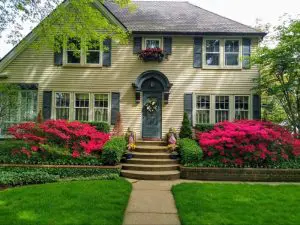Lighting is a powerful design element that has the ability to transform and enhance any living space. Beyond its functional purpose of providing illumination, lighting plays a crucial role in setting the mood, creating ambiance, and highlighting architectural features. From natural daylight to carefully selected fixtures, the art of lighting design can have a profound impact on how you experience and interact with your environment. In this guide, we’ll explore the various ways in which proper illumination can elevate your living space, the different types of lighting, and tips for effective lighting design.
Enhancing Mood and Ambiance
The right lighting can significantly influence your mood and the overall atmosphere of a room. Bright, well-lit spaces are associated with energy and productivity, while soft, dim lighting can evoke a sense of relaxation and intimacy. Whether you’re aiming for a cozy reading nook or a vibrant entertainment area, the right lighting design can help you achieve your desired ambiance.
Solution: Use dimmable light fixtures or smart lighting systems that allow you to adjust the intensity of light based on your activities and mood. Layering different types of lighting, as explained below, can also contribute to a well-rounded ambiance.
Creating Visual Interest
Lighting is a powerful tool for highlighting architectural elements, artwork, and decor. By strategically placing light fixtures, you can draw attention to specific features and create visual focal points in a room. Whether it’s illuminating a piece of art on the wall, showcasing a unique architectural detail, or adding drama to a textured wall, lighting can turn the ordinary into the extraordinary.
Solution: Use accent lighting, such as track lighting or wall-mounted fixtures, to focus attention on specific objects or areas. Consider using adjustable fixtures that allow you to direct the light precisely where you want it.
Defining Zones and Functionality
In open-concept living spaces, lighting can be used to define different zones and functions within the same area. By using a combination of ambient, task, and accent lighting, you can create distinct atmospheres for dining, working, relaxing, and socializing, all within a single space.
Solution: Install pendant lights over dining tables, recessed lights above workstations, and floor lamps in seating areas to establish functional zones. The variation in lighting types helps differentiate spaces while maintaining a cohesive overall design.
Maximizing Comfort and Functionality
Proper lighting design can enhance the functionality and comfort of your living space. In areas where tasks like reading, cooking, or working are performed, task lighting provides focused illumination to prevent eye strain and improve efficiency. In contrast, ambient lighting provides overall illumination that ensures comfortable navigation throughout the room.
Solution: Incorporate task lighting, such as desk lamps or under-cabinet lighting, in areas where specific tasks are performed. This helps prevent glare and shadows, making tasks more comfortable and efficient.
Types of Lighting
Effective lighting design involves a combination of different types of lighting to achieve the desired effects. The three primary types of lighting are:
- Ambient Lighting: Also known as general lighting, ambient lighting provides overall illumination to a space. It sets the foundation for the room’s lighting scheme and ensures that the area is well-lit.
- Task Lighting: Task lighting is directed lighting that serves a specific purpose, such as reading, cooking, or working. It provides focused illumination to make tasks easier and more comfortable.
- Accent Lighting: Accent lighting is used to highlight specific objects, architectural features, or decorative elements. It adds depth and visual interest to a space.
Tips for Effective Lighting Design
Here are some practical tips to help you create a well-designed lighting scheme for your living space:
- Consider Natural Light: Maximize the use of natural light during the day by using light-colored window treatments and arranging furniture to make the most of daylight.
- Layer Lighting: Use a combination of ambient, task, and accent lighting to create a layered and versatile lighting scheme.
- Choose Bulb Types: Select the right bulb types for each fixture. Incandescent, LED, and CFL bulbs offer different levels of brightness and color temperature.
- Control Options: Incorporate dimmer switches, smart lighting systems, or timers to control the intensity and timing of your lights.
- Balance Lighting Levels: Aim for a balanced distribution of light throughout the room, avoiding overly bright or dark areas.
- Use Lighting Fixtures as Decor: Lighting fixtures themselves can serve as decorative elements that enhance the aesthetics of your space.
- Consider Scale: Choose fixtures that are appropriately scaled for the room and its furniture.
- Avoid Glare: Position light fixtures to minimize glare and shadows, ensuring comfortable illumination.
Conclusion
The power of lighting in enhancing your living space cannot be overstated. From setting the mood and ambiance to highlighting architectural features and increasing functionality, proper illumination is a design tool that brings your space to life. By understanding the different types of lighting and incorporating effective lighting design principles, you can create a space that not only looks stunning but also caters to your practical needs and personal preferences. Whether you’re redesigning a room or starting from scratch, remember that lighting is the key to unlocking the full potential of your living space.



